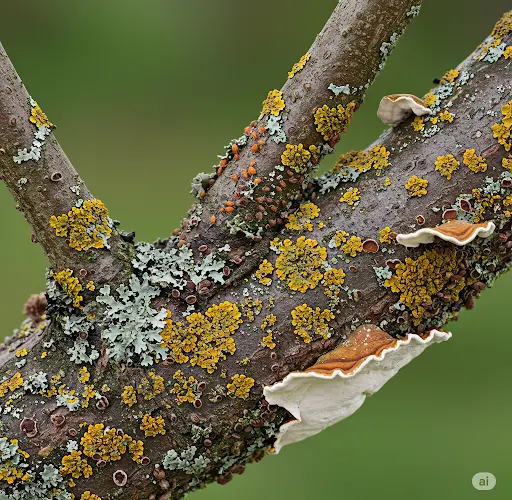Fruit trees are the crown jewels of a productive garden, but they also attract a host of problems—pests, fungal diseases, and lichen growth that can reduce fruit quality and overall tree health. Fortunately, there’s a powerful yet simple homemade solution that effectively clears away these issues without resorting to harsh chemicals.
This natural treatment is trusted by experienced gardeners for its ability to sanitize fruit trees, promote strong growth, and protect the bark and branches from future infestations. Applied at the right time, this mixture “burns out” harmful organisms and restores the tree’s vitality.
The Enemies of Healthy Fruit Trees
Over time, fruit trees can become hosts to a variety of pests such as aphids, mites, and scale insects. These pests often overwinter in bark crevices or lay eggs that hatch in spring. In addition, many trees develop lichens—a gray-green, crusty growth that, while not directly harmful, signals excessive moisture and poor airflow. Worse still are fungal infections like powdery mildew, rust, and blight that attack leaves, shoots, and fruit.
Regular cleaning and protection are essential to keep trees productive and disease-free. The solution below is one of the most effective and natural ways to do this.
The All-Purpose Tree Sanitizing Mixture
This treatment acts as a disinfectant and pest deterrent while helping to clean the bark from mosses and lichens. It is particularly useful during the dormant season or early spring, before bud break.
Ingredients:
-
10 liters (approx. 2.5 gallons) of warm water
-
3 tablespoons of baking soda
-
3 tablespoons of laundry soap (grated or liquid, unscented and biodegradable)
-
2 tablespoons of vegetable oil
-
Optional: 1 tablespoon of vinegar or wood ash
Each component plays a key role:
-
Baking soda raises the pH on the tree’s surface, creating an inhospitable environment for fungi and insects.
-
Laundry soap helps the solution stick to bark and dissolve surface residues.
-
Vegetable oil smothers insect eggs and larvae hidden in bark cracks.
-
Vinegar or wood ash (optional) adds additional antifungal properties and helps remove stubborn lichens.
How to Prepare and Apply the Solution
-
Dissolve the ingredients in warm water, mixing thoroughly until everything is well combined.
-
Let the mixture cool slightly before use. It should be applied at room temperature, especially if sprayed in cooler weather.
-
Apply with a sprayer or brush: Use a garden sprayer for broad coverage, or a soft brush to scrub the bark where lichen and scale are present. Make sure to treat the trunk, main branches, and the base of the tree. Avoid applying on tender buds or young leaves—this solution is intended for bark and dormant wood.
-
Best timing:
-
Late winter to early spring, before buds begin to swell.
-
After leaf fall in autumn, once the tree has gone dormant.
-
Avoid using this mixture during hot, sunny weather or during periods of frost. The ideal conditions are a cool, overcast day with no rain forecast for at least 24 hours.
Benefits of This Tree Cleaning Treatment
-
Eliminates overwintering pests: Many insects hide in the bark during winter. The oil and soap combination helps suffocate and dislodge them.
-
Removes lichen and moss: These growths are indicators of excessive humidity and can create hiding spots for pests. Regular cleaning helps restore bark health.
-
Prevents fungal infections: The alkaline environment created by baking soda helps destroy fungal spores before they infect buds and leaves.
-
Improves tree appearance and vigor: Clean bark allows better airflow, reduces moisture retention, and supports the tree’s natural defenses.
Additional Tips for Tree Health
-
Prune regularly to remove dead or crowded branches, which improves airflow and sunlight penetration.
-
Mulch at the base of the tree (but not against the trunk) to retain moisture and prevent weeds.
-
Monitor for signs of reinfestation: Look for discolored bark, curled leaves, or sticky residue that may indicate the return of pests or disease.
-
Repeat the cleaning annually, or twice per year if needed—once in early spring and once in late fall.
A Natural Solution with Powerful Results
This easy, affordable tree wash offers powerful protection without harming beneficial insects or the surrounding environment. By using it as part of a regular fruit tree care routine, you can enjoy cleaner, healthier bark, stronger trees, and more productive harvests.
Whether you grow apples, pears, plums, or cherries, this method can make a dramatic difference in the health and output of your fruit trees. Try it once, and you may find it becomes a standard part of your seasonal garden routine.



